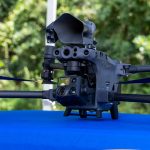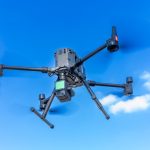
How Drones are Revolutionizing Law Enforcement
August 29, 2024
Drone Source Technologies: Your Premier Drone Provider
December 12, 2024The use of drones has transformed industries, from construction and agriculture to media and logistics. However, with this growing integration of drones into daily operations comes an equally important responsibility: ensuring compliance with drone regulations.
At Drone Source Technologies, we understand how navigating the regulatory landscape can feel overwhelming, especially as rules evolve. That’s why we’re here to break down what you need to know about drone regulations in the U.S., the challenges you may face and how we can help you stay compliant and focus on what you do best.
Overview of Drone Regulations in the U.S.
In the United States, the Federal Aviation Administration (FAA) governs drone operations to ensure safety and accountability in the airspace. Understanding these rules is essential for both recreational and commercial drone operators.
Recreational Drone Use:
For hobbyists flying drones recreationally, the FAA offers guidelines under the Exception for Recreational Flyers. This requires registering your drone if it weighs more than 0.55 pounds, following community-based safety guidelines and operating only in approved airspace.
Commercial Drone Use:
For commercial operators, the regulations are more comprehensive. Part 107 of the FAA’s guidelines governs the majority of commercial drone use, requiring drone pilots to obtain a Remote Pilot Certificate. This certification ensures operators understand airspace classifications, flight restrictions and safety protocols.
Key Regulations for Drone Operators
To ensure safe and compliant drone operations, here are some key FAA rules that all operators must follow:
1. Drone Registration
All drones weighing between 0.55 pounds and 55 pounds must be registered with the FAA. Commercial operators must renew their registrations periodically and label their drones with the unique registration number.
2. Operational Restrictions
- Altitude Limit: Drones must not fly higher than 400 feet above ground level unless granted specific authorization.
- Restricted Areas: Certain zones, such as near airports, military bases or national parks, are off-limits unless operators secure airspace authorizations.
- Line of Sight: Operators must maintain visual line-of-sight (VLOS) with the drone unless using a waiver.
- Night Flights: Flying at night requires proper lighting on the drone and FAA approval.
3. Waivers and Exemptions
The FAA allows operators to apply for waivers to bypass certain restrictions, such as flying beyond the line of sight (BVLOS) or in controlled airspace. These waivers require thorough documentation and a detailed safety plan.
Common Compliance Challenges
Even with clear regulations in place, drone operators often face hurdles in achieving compliance. Some of the most common challenges include:
- Keeping Up with Changes: The FAA periodically updates regulations, and staying informed can be time-consuming.
- Registration Confusion: Knowing when and how to register your drones can be a sticking point for both new and experienced operators.
- Navigating Complex Airspace: Operating near restricted areas or in crowded urban environments can lead to accidental violations.
- Overcoming Operational Restrictions: Requests for waivers or exemptions often require detailed planning and technical know-how.
Tips for Staying Compliant
At Drone Source Technologies, we work with customers across industries, helping them overcome compliance challenges. Here are some practical tips to help you stay on top of your drone operations:
1. Stay Updated
Make it a priority to regularly check for updates to FAA regulations. Subscribe to alerts from the FAA’s website or work with a provider like us to receive timely updates.
2. Obtain Proper Certifications
Ensure all pilots operating drones for your business are certified under Part 107. Training and passing the FAA’s Remote Pilot Knowledge Test are essential steps to earning this certification.
3. Use Pre-Flight Planning Tools
Flight planning software can help you assess airspace restrictions, weather conditions and no-fly zones, reducing the risk of violations.
4. Leverage Expert Support
When in doubt, work with an experienced partner. At Drone Source Technologies, we provide hands-on guidance to ensure your operations align with all current regulations.
How Drone Source Technologies Can Help
Navigating drone regulations doesn’t have to be daunting. As a trusted leader in the drone industry, we pride ourselves on helping customers understand and comply with all FAA requirements. Here’s how we support our customers:
1. Up-to-Date Information and Training
We provide ongoing education on the latest FAA rules, ensuring that you’re never caught off guard by changes in regulations. Our training programs prepare your team for Part 107 certification and beyond.
2. Assistance with Registration and Certification
From registering your drones with the FAA to guiding your team through the Remote Pilot Certification process, we simplify the paperwork so you can focus on operations.
3. Compliance-Focused Solutions
Our pre-flight planning tools and operational support systems help you identify restricted zones, manage airspace authorizations and safely navigate complex environments.
4. Industry-Specific Expertise
Whether you’re in construction, agriculture or another industry, we tailor our services to meet your specific compliance needs. We design our solutions to fit seamlessly into your workflows while ensuring regulatory adherence.
Compliance is more than just following the rules—it’s about protecting your operations and maintaining trust with clients and stakeholders.
At Drone Source Technologies, we’re here to take the guesswork out of drone regulations, offering expert guidance and practical solutions that allow you to focus on achieving your goals. If you’re ready to take the next step in ensuring safe and compliant drone operations, reach out to us today. Let’s work together to make your drone program a success!




